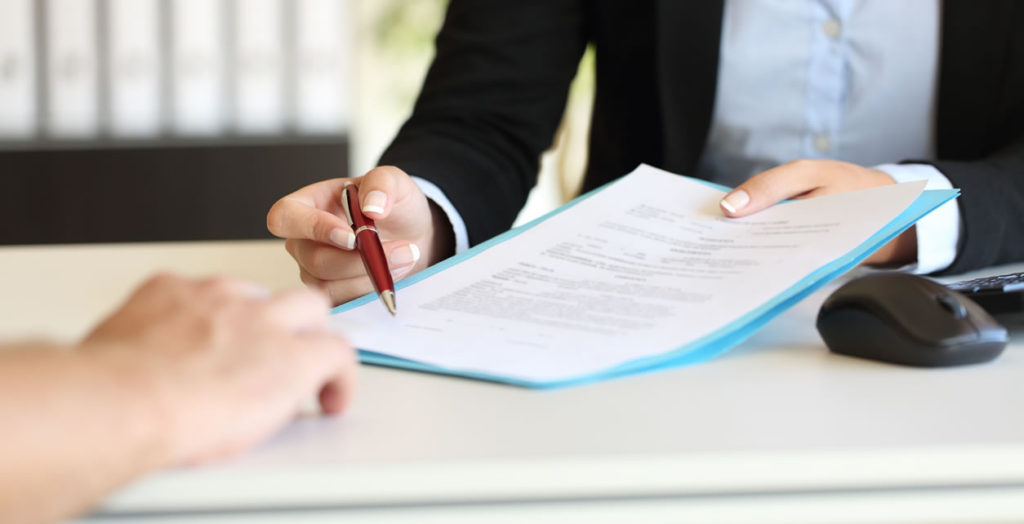What is liability waiver form?
A liability waiver form or a release of liability form (ROL) is a legal agreement between two sides dictating that the party participating will not hold the organization accountable for things like loss of property, personal injury or death. Particularly, the liability release form safeguards one party from legal responsibilities concerning physical risk. Though, parties should insure to protect all activity members as release forms do not typically protect a party from careless behavior.
Legal forms related to a waiver of liability
- Hold harmless agreement: A hold harmless agreement is mainly a clause in a legal document that identifies clearly that an organization or individual is not legally responsible for damages or injuries that could happen to the person signing the document
- Photo release form: A photo release form gives an organization the right to use an individual’s resemblance in photography
- Model release form: A model release form grants a photographer the rights to the utilization of a model’s resemblance in his/her photography
- Waiver: A waiver waives a person’s claim against an organization or an individual for participating in any mutually agreed activity
- Medical liability waiver: A medical liability waiver waives a person’s claim against an organization or an individual for participating in a mutually agreed medical procedure
When to use a liability waiver or release of liability form?
A liability waiver form must be made when dealing with any activity, product, or service that could harm participants. Including potentially dangerous or physically taxing activity, for instance, traveling or sports game as well as not yet officially approved product or service, will it be a new butter spread or an experimental helicopter. If required, work with a consultant who specializes in risk identification. This can be very useful in helping you decide how to use this agreement.
Who uses liability waiver or release of liability form?
Some businesses post signs warning of specific hazards or stating that they are not liable for damage or injuries experienced by visitors on the sites. Such signs are considered to prevent lawsuits.
Property owner’s liability for injuries to customers might not be reduced by warning signs. In addition, they draw customers’ attention to dangers and may generate lawsuits concerning the placement of the sign and language used.
Instead of using above method of warning, business owners can use liability waiver (release of liability) forms to ensure that a customer acknowledges in writing that they comprehend the risks and that they agree to accept them. The customer also refrains from their right to sue your business for injuries experienced from the activity.
The risk of all lawsuits will not be eliminated by liability waiver forms.
A liability waiver (release of liability) form is not a replacement for general liability insurance. Customers who have signed a liability waiver form can still file an insurance claim. In addition, lawsuits can arise from accidents or activities not covered by the liability waiver form.
For instance, your business might offer classes of aerobics. All students sign a waiver form that releases you of liability for injuries they experience in the class, but the waiver will not free you of liability for their injury if a student falls over a wet floor.

What are the protections that liability waiver forms (release of liability) can provide?
Here are the most usual protections that various liability waiver forms can insure:
- General release: One party releases all specified and unspecified lawful claims against another party.
- Mutual release: Both parties release one another from all specified and unspecified, past and present legal responsibilities. In this matter, each party is at the same time a releasor and releasee.
- Car accident release: As the name indicates this form is used in incidents involving car accidents. This is basically a more peculiar version of a General or mutual release. In this case, one or both parties agree not to sue the other for known and unknown damages associated with the crash in question. usually, monetary payment is made from the responsible party to the other in exchange for the waiver.
- Property damage waiver: These waivers are usual when the real estate, for instance: Apartment, home or office, property or personal property, for instance: car, furniture, jewelry, antiques, musical instruments are impaired. Commonly, the party responsible for the impair pays the owner an agreed amount of money in exchange for the waiver. This prohibits future financial restitution or any legal action.
- Waiver for participation in an event or activity: If you ever been riding in a hot air balloon, skydiving, driven a race car or gone bungee jumping, you possibly signed a waiver of release assuring not to file a lawsuit against the business offering the experience if you are injured. Waivers for participation are most typical in tourist and entertainment industries, where experiences provided may cause some serious injuries of a body and even death.
Risks of not using a liability waiver form (release of liability)
Without involving into a liability waiver (release of liability), you can open your business or yourself to a host of undesired or unnecessary dispute settling process. though you might experience beforehand costs for generating, disseminating, and signing a liability waiver, by doing this way, you will be safeguarding yourself and your business from legal battles, litany and legal fees in the short period and future.
While a liability waiver (release of liability) gives you a possible layer of safety, it does not protect you. It just makes it the client’s responsibility to prove that they were not informed about the probability and the degree of risk. The liability waiver (release of liability) also warns the signee that they want to take part in a potentially dangerous endeavor. This is why you should involve all possible types of harm in your liability waiver (release of liability – ROL) wording.
Using a liability waiver (release of liability) and notice of transfer for selling a car
When selling your car, technically, you are still the owner of the vehicle till the registration and title are officially transferred. In some states, for instance, in California, a release or waiver (liability release form California) is required when you sell your vehicle to transfer legal responsibility for the car while the Department of Motor Vehicle (DMV) processes the switch in title and registration.
Provision of odometer reading, vehicle identification number, and the vehicle sale date of the used vehicle are required in many waivers. This is crucial, because it allows the new owner to evince that they now own the vehicle.

How to make liability waiver (release of liability) form?
Every liability waiver (releases of liability) form should involve the following information:
- Releasor: Name, physical address, and contact details
- Releasee: Name, physical address, and contact details
- Effective date: This is the date that the liability waiver form (release of liability) was signed
- Event or Incident description: Description of the event, incident or circumstances that created necessity for a liability waiver (release of liability)
- Consideration or restitution: The sum of money or other transaction to be paid in return for the liability waiver (release of liability). Some liability waiver forms, such as a car accident release or damage waiver for property, involve a payment that will be made if specific types of injuries happen. However, before this clause will be added, you should talk to a lawyer in your state to determine if it is required. If it is required, are there any regulations that you must stick to? This clause may become of quite a limitation of your legal rights.
- Governing State Law: Identifying, which state’s laws will be used for any legal action, considerations or disputes related to this particular instance
Are liability waivers lawfully enforceable?
Waiver form of a personal injury, in which a potential complainant agrees to hold a potential defendant safe if injury occurs, is considered to be an agreement. Such document is legally binding. For the waiver to be justifiable, the individual offering the waiver must be aware that they are waiving a recognized, accepted risk. The waiver must be made voluntarily. A waiver that is the product of one’s own free will is considered a voluntary waiver. If a plaintiff is forced or pressured into making the waiver, the waiver will not be validated by a court.
If a party, after signing a legitimate waiver, sues the company or an individual whose liability it waived, that plaintiff can claim the waiver as a defense in the lawsuit. For instance, a plaintiff may buy dangerous chemicals from a company. The contract between the plaintiffs contains the language of the waiver. The waiver notifies the plaintiff that utilization of the product is innately dangerous, i.e., the company has done everything it can to manufacture and design the product with safety, but there is still a recognized risk of eye injury.
The waiver notifies the plaintiff that the chance of injury can be reduced by wearing an eye mask. The plaintiff consciously and voluntarily utilizes the product without eye protection. If the plaintiff experiences an eye injury the company warned of, and then take legal action against the company, the company can indicate to the liability waiver. The court with which the plaintiff took legal actions will dismiss the claim, since the agreement has not been breached by the company.
A court will hold that a waiver cannot be applied, In some instances. In majority of states, a company cannot require someone to sign a waiver in which the defendant waives its liability for common carelessness. This means that in a case where, for instance, a plaintiff boards a roller coaster, and is injured because the roller coaster was carelessly maintained by the amusement park, the last-mentioned cannot demand the plaintiff act on the waiver. A defendant may not attempt to enforce a waiver as well, that calls for behavior that is unlawful or that would represent a crime.
If a court finds that a company demands the waiver to be signed, offering the plaintiff no possibility to bargain, the court can annul the waiver. State laws also dislike waivers that are excessive and not specific enough. An amusement park waiver that is created to waive liability for any possible injury sustained at the park is likely to be excessive, since the particular activities for which waiver is sought are not listed.
Requirements for liability waiver (liability release) form
If it is not enforceable, a liability waiver form is useless. Be certain that your form is valid in your state. Most states permit exculpatory agreements that discharge one party from liability for causing injury to another party, but some states have strict demands for this while others are more tolerant. Three states— Virginia, Louisiana and Montana entirely bar such agreements.
Your liability waiver is more likely to be implemented if it is written in clear, straightforward language. The primary reason that waivers are not enforced is poorly constructed wording. Your message should be noticeable, not covered up in small type.
Be certain that each participant signs a release. A liability waiver is not enforceable except if it contains the participant’s signature.
Most states will not enforce liability waiver forms signed by minors, but some will accept liability waiver forms signed by a parent of a minor.
State laws and protective clauses in liability waiver forms
How well a liability waiver works to safeguard a business depends upon many factors.
- The first is the liability waiver form set-up. Extra protective clauses may be included. These involve, though are not limited to, indemnification agreements, disclaimers, covenants not to sue and informed consent agreements. Involving the clauses that relate to your business may provide highest protection in the event of an injury or accident
- Your state’s laws is the second important consideration. It is crucial to find, read, and understand your laws of your state to figure out the legal requirements to draft a liability waiver. You may find it useful to talk with an attorney because from state to state the laws vary so drastically. For instance, a liability waiver is almost always enforced in Alabama. Though, they are never enforced in Virginia or Louisiana. Several states from time to time enforce them, states that frequently, but will not always, enforce them, and states that commonly do not enforce them.
Despite of which state you live in, it is very important to make certain that a few key components are included in the fee waiver you use. If the documents are poorly written, they fail in states that have a tendency to support them. Like any other legal document, the liability waiver (liability release) form you use should be written and understandable.
While it is very important to involve the right provisions in your liability waiver form, there is something crucial you must know. It will not and cannot safeguard you or your business for all incidents or accidents. Almost every state refuse to support a waiver through which the business seeks protection from their reckless conduct or gross negligence. Thing to consider is how your state defines both reckless conduct and gross negligence.

Find out more, free, downloadable templates here
How to use liability waiver (release of liability) forms?
Keep signed releases accessible. Individuals who are injured might not file lawsuits immediately, so store the signed forms in a safe location where they can be recovered when and if required. Pay attention to a few other moments:
- Do not use legal jargon if you decide to draft your own form. liability waivers should be written in straightforward language that customers will understand, not in formal and technical language
- In fine print, do not lose the intent of the release. A liability waiver form must be easy to read. It must be written in text that is large enough to see well and clearly
- Do not give a participant or patron a liability waiver form that has blank spaces. Or else, they might claim that you included terms they did not agree to
- A liability waiver or release of liability form safeguards business owners if a patron or customer is injured in the duration of a sponsored activity or event
- Liability waiver forms are not a substitute for general liability insurance, but they can put on an extra layer of security
- Forms should be written in unambiguous, clear language so customers comprehend what they are signing
- Consider having an attorney draft a liability waiver form for you to make sure that you meet your state’s requirements
For your information
You should contact a personal injury attorney, if you need help with drafting, figuring out or understanding, whether you are subject to a liability waiver (liability release). An professional personal attorney near you can draft and review the language of the liability waiver form, clarify what activity the liability release applies to, and can assist you to understand what are your responsibilities and rights in respect of the waiver.
What to do if customer refuses to sign liability waiver (release of liability) form?
If a customer or participant will not sign a liability waiver (liability release) form, you are not obligated to permit them to engage in an activity. You can feel free to safeguard yourself and turn them away. Just be straightforward that you are acting so because they are unwilling to sign the liability waiver form.
Below you can download free template of liability waiver (release of liability) form

